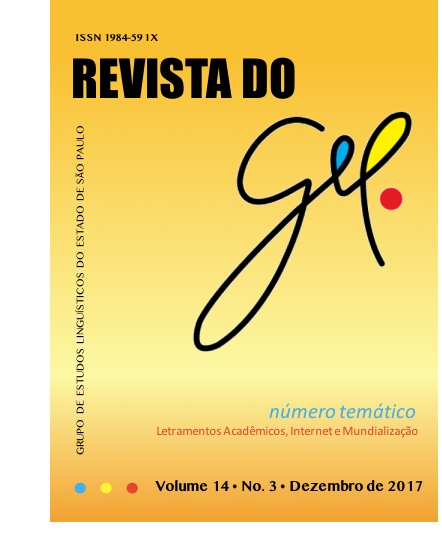Teaching english for agriculture through proverbs in l1 and l2
DOI:
https://doi.org/10.21165/gel.v14i3.1876Palavras-chave:
English for Specific Purposes. Language Teaching. Pedagogical Translation. Proverbs. Specialised languages.Resumo
This paper addresses the role of translation and mother tongue as fruitful teaching and learning resources in the case of English for Specific Purposes, particularly the study and translation of proverbs in the process of teaching and learning English for agriculture. It results from a research work involving classroom activities with the translation of proverbs, understood as tradition handed down from generation to generation, as a way of identifying, in different manners of expression, deep roots of cultural influence, as well as to perceive undercurrents of ideas – ethical, political, aesthetic, literary, scientific, etc. – in the history of peoples’ cultures. Agriculture is a rich field of proverbial heritage in most cultures and so proverbs can most productively be used to various purposes within the English class. From conveying the difference between linguistic and cultural competence, linguistic and idiomatic meaning, literal and figurative language, written and spoken language to vocabulary acquisition and retention, proverbs can unfold in a multitude of classroom activities demonstrating their huge application potential and didactic power.Downloads
Não há dados estatísticos.
Downloads
Publicado
31-12-2017
Como Citar
Carreira, V. A., & Burgeile, O. (2017). Teaching english for agriculture through proverbs in l1 and l2. Revista Do GEL, 14(3), 154–168. https://doi.org/10.21165/gel.v14i3.1876
Edição
Seção
Artigos
Licença
Esta revista oferece acesso livre imediato ao seu conteúdo, seguindo o princípio de que disponibilizar gratuitamente o conhecimento científico ao público proporciona maior democratização mundial do conhecimento.
A REVISTA DO GEL não cobra taxa de submissão ou de editoração de artigos (articles processing charges – APC).
Os critérios gerais de direitos autorais da REVISTA DO GEL estão dispostos no termo de direitos autorais que cada autor aceita ao submeter seu trabalho no periódico. Como regra geral o periódico utiliza as regras CC BY-NC da Creative Commons (regra disponível em: https://creativecommons.org/licenses/by-nc/4.0/legalcode)



